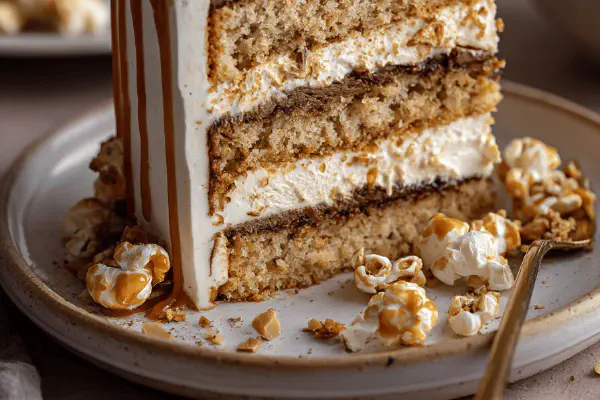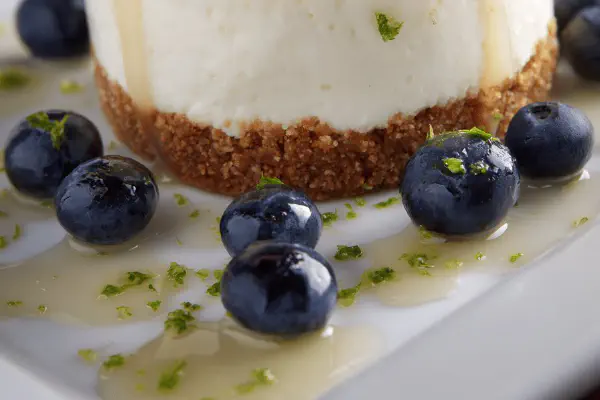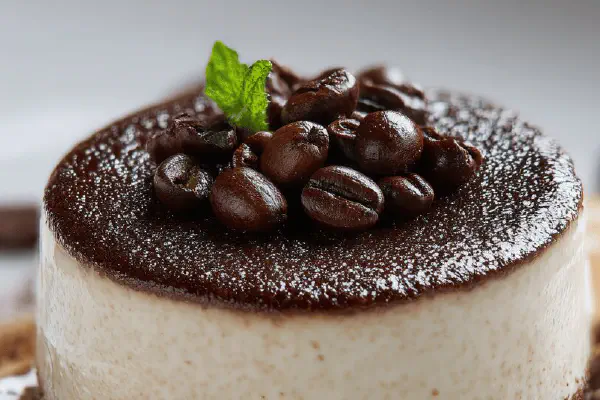Lemon Strawberry Shortcake

By Emma
Certified Culinary Professional
Ingredients
LEMON BISCUITS
- 260 ml (1 1/8 cups) all-purpose flour
- 8 ml (1 1/2 tsp) baking powder
- 45 ml (3 tbsp) granulated sugar
- 60 ml (1/4 cup) cold unsalted butter
- Zest of 1 large lemon
- 10 ml (2 tsp) lemon juice
- 150 ml (2/3 cup) heavy cream
TOPPING
- 600 ml (2 1/2 cups) fresh strawberries sliced
- 3 tbsp granulated sugar
- 200 ml (3/4 cup plus 1 tbsp) heavy cream
- 5 ml (1 tsp) vanilla extract
- 5 ml (1 tsp) almond extract
About the ingredients
Method
TOPPING PREP
- 1. Slice strawberries and sprinkle 2 tbsp sugar over them. Let rest about 25 minutes, stirring occasionally. Juice pools, strawberries soften but still hold shape. Juices slick and glossy.
BISCUITS
- 2. Preheat oven to 195°C (380°F). Fan off or else drying crust. Use upper-middle rack; too low will brown fast, too high burns edges.
- 3. Mix flour, baking powder, then sugar in medium bowl. Cold butter diced, add. Work with two knives or pastry cutter. Don’t overwork — coarse, pebbly crumbs. Look for pea-sized lumps visible.
- 4. Add lemon zest for sharp citrus bite, then juice. Pour cream gradually, fold lightly with spatula, barely combined. Sticky, shaggy dough. If too wet, flour lightly on surface, fold once.
- 5. Turn dough onto floured board. Pat into 15 cm square, about 2.5 cm thick (some unevenness OK). Cut into 4 rough squares — don’t twist knife, straight cuts avoid seals that stop rise.
- 6. Place biscuits on baking sheet lined with parchment, spaced apart. Brush tops lightly with cream or milk if you want a golden sheen.
- 7. Bake 18-22 minutes. Listen: gentle crackle at edges, tops turning blonde gold, sides firm but inside still soft. Don’t overbake or becomes dry and crumbly. Cooling rack is essential to avoid soggy bottoms.
WHIPPED CREAM
- 8. Chill mixing bowl and beaters cold (fridge or ice bath). Pour cream, add vanilla and almond extracts (almond adds nutty warmth without nuts). Beat medium speed until soft peaks form; don't overwhip.
TO ASSEMBLE
- 9. Slice biscuits horizontally with serrated knife. Base, then spoon macerated strawberries plus juice evenly. Spoon or pipe whipped cream next.
- 10. Cap with biscuit tops. Finish with whipped cream dollops or swirls. Add fresh strawberry halves or lemon zest curls for visual punch.
- 11. Serve immediately. Leftovers wrapped keep biscuit texture better in fridge up to a day but avoid early assembly; juice saturates biscuit, mush ensues.
- 12. If strawberries dry or unripe, briefly marinate with lemon zest and a touch of honey to brighten and soften.
Cooking tips
Chef's notes
- 💡 Start with cold butter diced small - keep texture flaky not greasy. Mixing with knives breaks chunks better than fingertips. Avoid overworking dough else dense biscuits form. Dough sticky is okay; dust flour sparingly when folding to help shape squares. Cut straight down with serrated knife for rise; twisting seals edges, traps steam. Watch biscuit edges for color changes; slight crackle sound tells when nearly done. Oven position crucial; too low burns bottom, too high darkens edges fast. Use middle rack.
- 💡 Strawberries need rest time once sugared. Juice release softens but berries still hold shape if stirred occasionally. Don’t skip 25-minute maceration unless rushed; this step makes fruit shiny and tender pockets inside biscuits. If berries unripe, mix with zest and a touch of honey to boost aroma and sweetness; marinate briefly for better flavor. Drain excess juice if overly juicy when assembling—too much saturates biscuit like sponge.
- 💡 Whip cream with chilled tools only; warmth breaks fat structure, leads to runny peaks or grainy texture. Add vanilla plus almond extracts last to keep aroma intact. Beat at medium speed waiting for soft peaks then stop. Overwhip turns grainy then breaks. Stop at fluffy but foldable peaks. If cream too loose, chill and retry; too stiff means overbeat. Practice feel over timer here.
- 💡 Separate biscuit baking from assembly to keep texture intact. Cool completely on rack before slicing horizontally; warm biscuits crumble or compress under knife pressure. Spoon berries evenly on bottom layer to avoid pooling. Use dollops or pipes of whipped cream next. Top with biscuit caps gently—avoid pressing down or cream spills over sides. Garnish with fresh strawberry halves or lemon zest curls for color contrast and hint of bitterness.
- 💡 If fresh strawberries not available, thaw frozen berries fully then drain very well or toss with some sugar. Expect softer texture, possibly less juice. Adjust sugar in macerating step accordingly. Flour can be substituted with pastry flour for less structure but expect biscuits to spread more. Butter substitution with shortening or half-and-half plus butter possible but changes mouthfeel. Oven temperature needs attention; small changes affect crust and crumb texture dramatically.
Common questions
How to tell when biscuits are baked?
Look for golden blond edges; gentle crackling noise. Press top lightly, bounce means set inside. Avoid dark brown tips or hard crust. Oven temp varies; watch cues not timer.
Can I use frozen strawberries?
Yes but drain thawed berries thoroughly first. Throw in extra sugar if less sweet or tart. Softer texture, more juice; careful assembling to not drown biscuits. Alternative: quick macerate fresh with lemon zest.
What causes soggy biscuits?
Usually juice pooling without cooling biscuit first. Slice cooled biscuits before adding berries plus juice. Layer cream between layers to add barrier. Assemble last minute to reduce seepage.
How to store leftovers?
Store biscuits separately in airtight container fridge. Store macerated berries separately too; whipped cream best made fresh. Reassemble day of eating for best texture; otherwise biscuits soggy, cream loses shape. Wrap biscuits loosely to keep slight crust.



